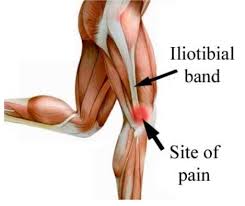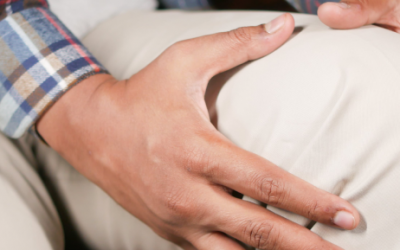Running is a popular option for people to stay fit as it can be commenced nearly everywhere and by almost everyone. It is a healthy activity with positive effects on the cardiovascular system and offers mental and social benefits too. As with any sport, there is a risk of injuries amongst those that run.
Traumatic running injuries are infrequent and mainly involve strains and sprains or skin lesions (blisters and abrasions). Around 80% percent of running injuries are overuse in nature, this means that there is a mismatch between how much running is involved and how much the body can tolerate. Majority of running injuries occur in the lower limb with the knee, foot, ankle, and leg being mostly affected.

What causes running injuries?
There are several risk factors that have the potential to increase the chances to sustain a running injury.
- Training itself – maybe the most important factor. This includes variables such as frequency, intensity, distance, recovery, and surface. When creating a running program (even a basic one) all these variables are essential and need to take into consideration.
- Technique – some studies showed that heel strike runners were 2.5 times more likely to have RRIs compared to midfoot strike runners, however, no clear consensus is made yet.
- Improper Shoes – There is no consensus on whether shoes can reduce your risk of injuries. Some people even prefer a minimalistic approach to footwear. The type of shoe may be of no significance, however, the runner might opt to wear a comfortable pair of running shoes. Improper footwear has the potential to cause injuries either by restricting your toes, not supporting your foot and failing to absorb impact forces from the ground. Shoes provide one basic function and that is to protect the bottom surface of the foot.
- Anatomical, biomechanical and personal risk factors (foot type, arch, BMI, and age) – again there is a controversy between the literature as to which factors increase the risk of running injuries. Some studies found that higher age, being overweight or underweight and previous injuries increases the risk to develop subsequent injuries.
How you can prevent Running-Related Injuries:
A good initial step is to start slow and go slow. Don’t do too much too soon! Allow few “easy” sessions for your body to get used to running first. Learn to listen to your body, when the body starts complaining i.e. stiffness, pain or you need more days to recover from a run, reduce running mileage to allow for adequate recovery and to prevent possible RRI.
Apply the 10% rule, only increase your distance by 10% every week.
Additional preventative options are:
- Exercises to strengthen your core, hip and leg muscles – having a robust body and muscles that can support you while running is crucial towards reducing your risk to injuries. Examples of exercises include: Squats – Bridges – Planks – Bird Dog – Heel raises.
- Modification of training schedules – Allow some rest days between your runs and include both short and long distances in the week.
- Footwear and socks – ensure that the footwear is suitable for you and is comfortable during running.
5 common running-related injuries are listed below:
- Patellofemoral pain syndrome (PFPS) – which is primarily felt behind or around the patella.
- Achilles tendinopathy – presented as pain and stiffness in the Achilles tendon in the back side of your heel.
- Plantar fasciitis (plantar fasciosis) – Can be felt as heel pain, particularly during the first few steps in the morning, tenderness in the medial border of the heel is also common.
- Medial tibial stress syndrome (MTSS) – a common overuse injury which is characterised by pain in the medial aspect of the tibia during exercise. Usually, there is tenderness when pressing on the posteromedial aspect of the shin bone over a length of more than 5cm.
- Iliotibial band friction syndrome (ITBFS) – another frequent overuse injury due to the repetitive motion of the knee joint which results in excessive friction between the lateral epicondyle and the iliotibial band in the outside of the knee joint.
How we can help:
- We can explain and advise on your condition and how to actively manage your symptoms. We believe that educating our patients is a fundamental step towards their own recovery. It also helps to take away any unnecessary stress and anxiety caused by their condition.
- We offer an all-rounded tailored treatment to help reduce your pain levels and facilitate your recovery.
- We will provide you with therapeutic exercises and guide you throughout your recovery process to start returning back to normal daily activities as soon as possible.
- We believe that prevention is always a better option than cure! Thus we help you create personal prevention strategies to avoid a similar situation in the future.
- We take a patient-centered approach where we will refer you for scans, other tests or to an appropriate consultant if your condition requires further investigation.
See also:
Sources:
Injuries in Runners; A Systematic Review on Risk Factors and Sex Differences (2015). PLoS One; 10(2): e0114937. Maarten P. van der Worp, Dominique S. M. ten Haaf, Robert van Cingel, Anton de Wijer, Maria W. G. Nijhuis-van der Sanden, and J. Bart Staal.
Incidence and determinants of lower extremity running injuries in long distance runners: a systematic review (2007). Br J Sports Med; 41:469-480. Van Gent RN, Siem D, van Middelkoop M, van Os AG, Bierma-Zeinstra SMA, Koes BW.



